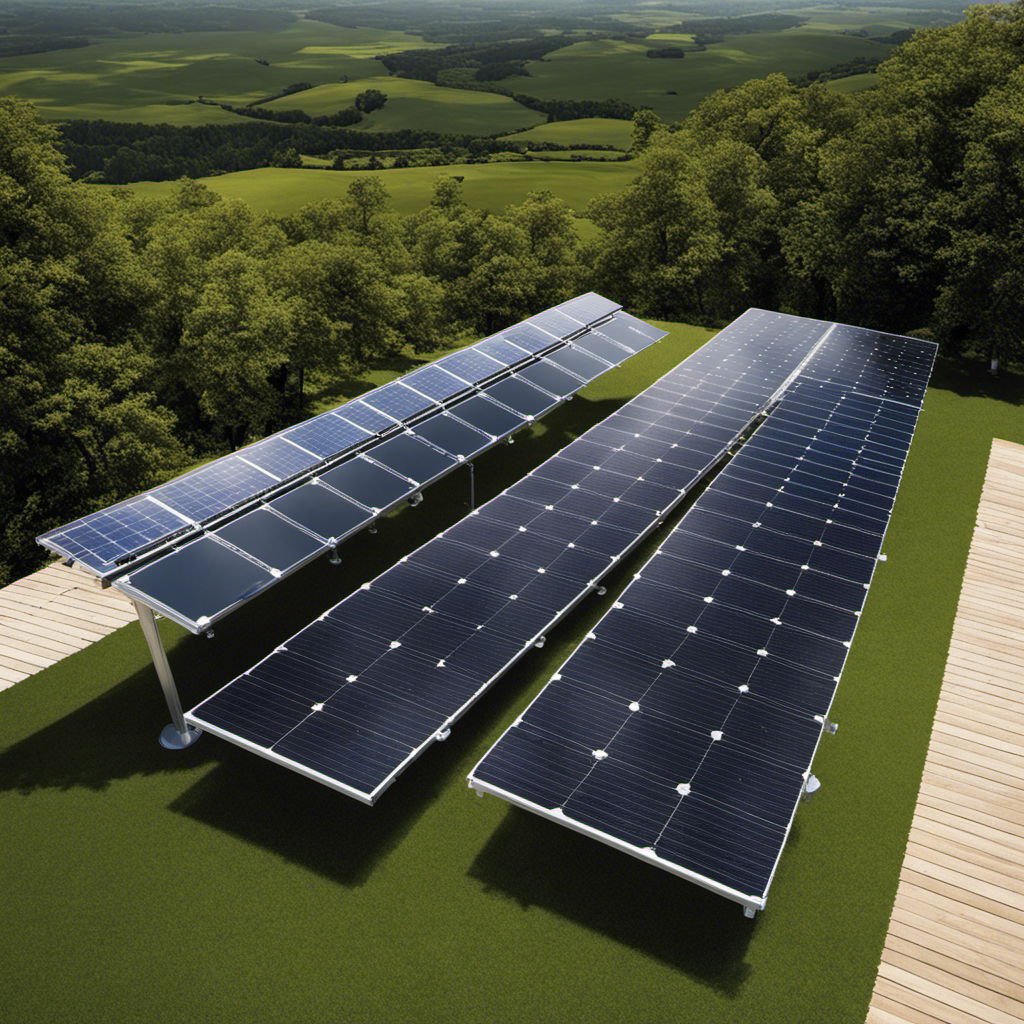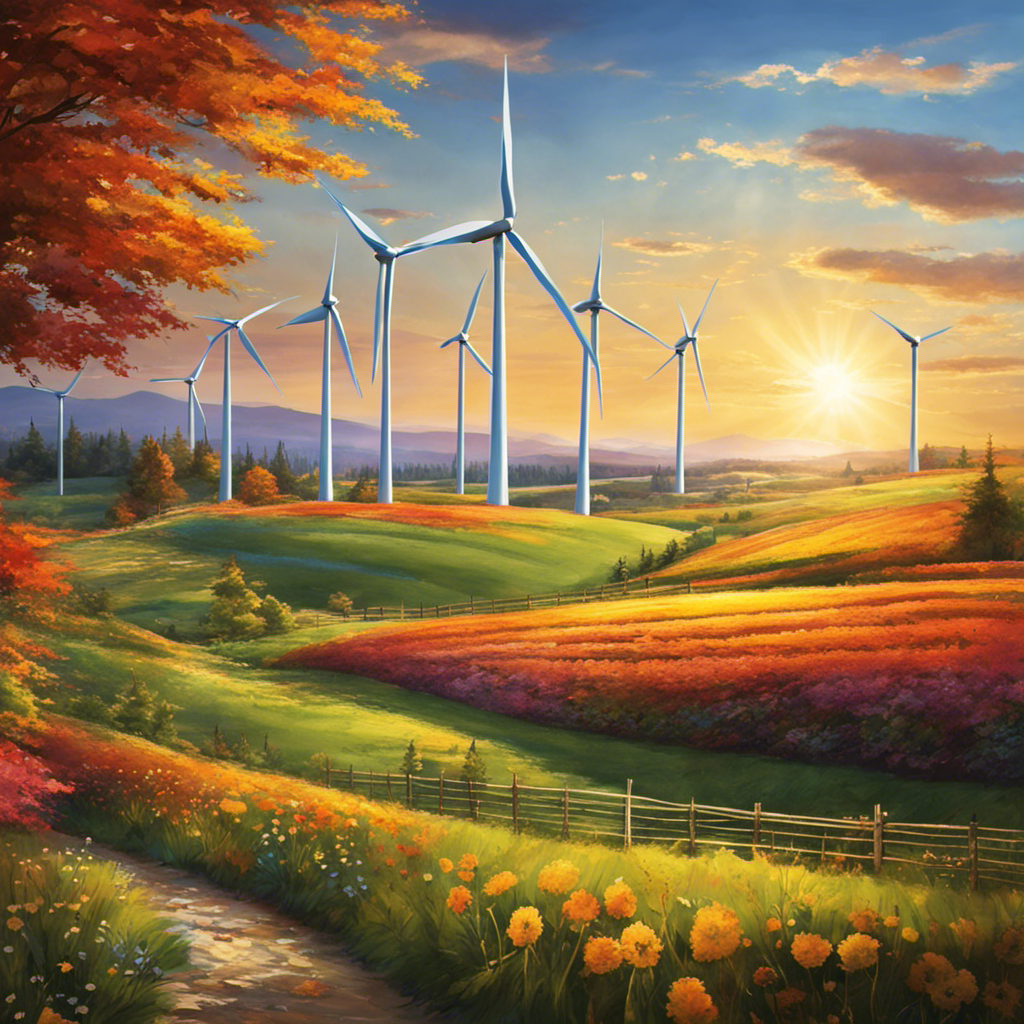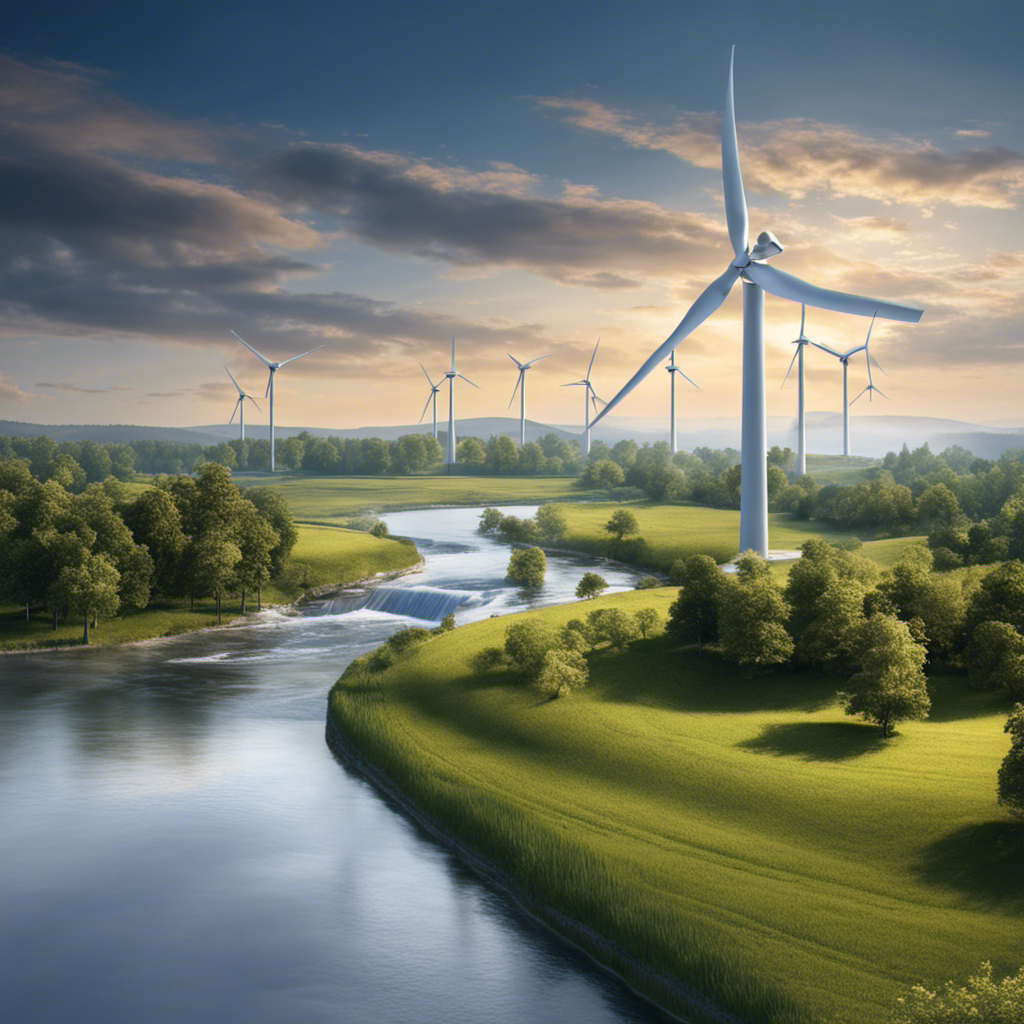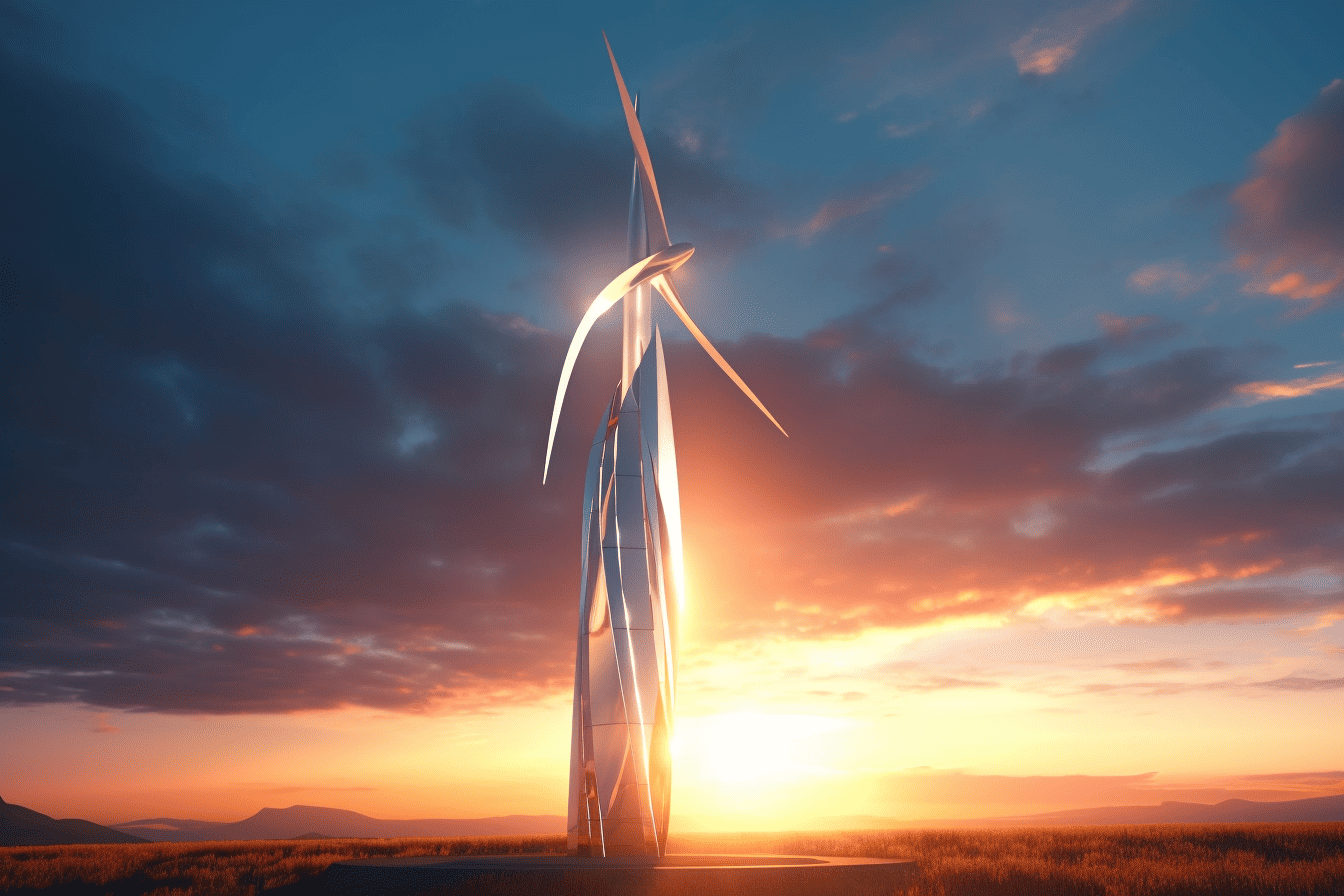Beginners Guides
What Is the Law of Conservation of Energy?

The principle of energy conservation asserts that energy can neither be produced nor annihilated, but rather it can only change forms or be transferred from one entity to another. Put differently, the cumulative energy within an isolated system stays unchanged. This notion is critical in the realm of physics and serves as an essential foundation in the examination of thermodynamics, mechanics, and various other physics disciplines.

The conservation energy law states that a system’s energy total is constant over time. This is the most fundamental principle of physics. It is based on the fact that the energy of an isolated system never changes. Therefore, the power of a remote system is said to be conserved.
The law of energy conservation is one of physics’s most important laws. It states that energy cannot be created or destroyed, only transferred or transformed from one form to another. This principle is a fundamental concept in physics and is a key principle in the study of thermodynamics, mechanics, and other branches of physics.
Importance of Understanding This Concept in Physics and Everyday Life
The law of conservation of energy is important because it helps us understand the behavior of matter and energy in the universe. It also helps us understand how and why energy is conserved in physical and chemical processes. The law of conservation of energy also has important implications for our everyday lives. For example, it helps us understand why we need to conserve energy by using less fossil fuels and why renewable energy sources are so important.
Brief History of The Discovery of The Law
The law of conservation of energy was first discovered in the early 19th century by physicists such as Julius Robert Mayer and James Joule. They observed that when work is done on a system, the amount of energy in the system remains constant. This led them to the conclusion that energy cannot be created or destroyed, only transferred or transformed from one form to another.
Relationship Between Conservation Mass and Conservation Energy
Mass and energy are two concepts that go hand-in-hand. The law of conservation of mass states that a system whose reactants are equal to its products will have an identical total mass. It also states that energy cannot be created when it is transformed into another type. For example, when a toy car hits a wall, it transfers energy from kinetic to potential energy, but the resulting mass is unchanged.
According to this law, energy cannot be created or destroyed. However, it can be converted from one form to another. For example, a car that is at the top of a hill will move faster as it coasts down the hill. As kinetic energy increases, potential energy decreases. As a result, the car should end up at the same height if there is no friction.
The relationship between the conservation of mass and the conservation of energy is fundamental to the study of the universe and science. It is the most basic principle of nature. It explains how physical objects work and explains why they behave the way they do. In addition, it explains how the laws of motion work.
The law of conservation of mass and energy was first described by Albert Einstein. It explains how mass and energy are equivalent and that they can be converted from one form to another. Einstein also created an equation that states that the total mass of an object and its energy before and after a reaction is the same. Similarly, the law of conservation of mass and energy can be applied to chemical reactions and balancing equations.
The principle of conservation is an even more fundamental principle and is not a simple rule. It has been in existence for centuries and has never been broken. For example, a falling fruit has kinetic and potential energy, whereas a falling apple falls with zero velocity. Both types of energy will be absorbed by the fruit.
Applications
One of the most fundamental laws in physics, the law of conservation of energy states that energy cannot be created or destroyed. This means that the energy of an isolated system will not change over time. This basic concept has many applications. It helps scientists understand a wide range of phenomena and situations in dynamics. A rollercoaster best illustrates this law.
One way to apply this principle is to see how energy is transformed. When you burn coal, the carbon atom transforms into carbon dioxide. The mass of the carbon dioxide atom may change, but the energy within that atom remains constant. Like the above, when a toy vehicle hits a wall, its energy transforms from kinetic energy into potential energy.
Electricity is also subject to the law of conservation. Electrical energy can be transformed into electricity by various power generation processes, including hydropower plants and nuclear power plants. In addition to transforming the energy of the sun, electrical energy can also be converted into energy. This is called electricity production.
The law of conservation is also useful for the analysis of electrical circuits. Kirchhoff’s voltage law (named after German physicist Gustav Robert Kirchhoff) relies on this principle to determine the voltages encountered by circuits. The voltage encountered by the circuit loop must equal zero, because the total of the voltages encountered in the circuit loop must equal zero.
The law of conservation of energy is often used in engineering and physics. Emmy Noether’s theorem – based on continuous-time translation symmetry – proved that the conservation of energy is a fundamental principle of physics. His work made the law famous, proving that energy in closed systems is always conserved. Emmy Noether also proved that the law of conservation of energy is related to the symmetry of the universe. Translation invariance is an example of the law of conservation momentum and energy.
Applications of the Law of Conservation of Energy
A. Energy in mechanical systems (e.g. roller coasters, swings): The Law of Conservation of Energy states that energy can neither be created nor destroyed, but it can be converted from one form to another. This law has many applications in mechanical systems, such as roller coasters and swings.
Roller coasters are an excellent example of the conservation of energy at work; the potential energy gained from the height of the ride is converted into kinetic energy during its descent and then transferred back into potential energy as it climbs again. On a swing, potential energy is converted to kinetic energy when the swing is pulled back and launched forward; this kinetic energy is then converted back into potential energy as the swing slows down and reaches its highest point before descending again.
B. Energy in electrical systems (e.g. batteries, generators): Batteries and generators are examples of devices that rely on the Law of Conservation of Energy for their operation. In a battery, chemical reactions between two or more electrolytes store electrical energy which can then be released when an electrical current is introduced to them.
Similarly, in a generator, mechanical energy is used to rotate a coil within a magnetic field causing electrons to flow through it and generate electricity; this electricity can then be stored for later use or utilized immediately as desired by the user.
C. Energy in thermal systems (e.g. heat engines, refrigerators): Heat engines are also based on the Law of Conservation of Energy; they convert thermal energy into mechanical power which can then be used to produce motion or generate electricity among other things.
Refrigerators work similarly in that they use fluid with low thermal conductivity to trap heat inside the appliance while venting out cool air through vents on top or sides; this process occurs due to differences in pressure between warm and cold air produced by temperature variations between outside air and interior walls within the fridge itself..
D. Energy in chemical systems (e.g combustion, photosynthesis): The Law of Conservation of Energy also applies to chemical reactions such as combustion processes which convert chemical bonds between molecules into heat and light; this usually occurs when oxygen comes into contact with combustible materials like oil or coal releasing large quantities of stored up chemical energy rapidly due to an exothermic reaction taking place within them.
Photosynthesis works similarly but instead uses light from sunlight absorbed by plants’ chlorophyll pigments converting it into chemical bonds that are stored within sugar molecules for later use.
E. Energy in nuclear systems (e.g, fission, fusion): Fission reactions occur when heavy radioactive elements split apart, releasing vast quantities of atomic energy whereas fusion requires light elements like hydrogen atoms being forced together under high temperatures creating heavier elements like helium while producing even more powerful radiation than fission reactions.
Both these reactions involve particles with different masses exchanging mass energy equivalently showing how conservation laws apply even at subatomic levels.
Examples
One of the best examples of the law of conservation of energy is the flow of a fluid. A fluid’s energy cannot be destroyed completely, so it can only transfer. The movement of a stationary object can also transfer kinetic energy. This phenomenon is called momentum transfer, demonstrating the law of energy conservation.
A wide range of everyday situations can illustrate the law of conservation energy. For example, solar panels work to harness the energy from the sun and convert it into electricity. This allows people to save money while also protecting the environment. Likewise, people can use energy wisely by using energy-efficient appliances.
A pendulum motion can show how kinetic energy is converted into potential energy. Friction is what makes this conversion possible. This is similar to an apple falling from a tree. The potential energy of the apple at A is the greatest. It loses energy as heat when it falls to the earth, but its total energy remains the same. However, it might take longer for an apple to fall to the ground.
A cart that travels on a smooth track can be used to illustrate the conservation of energy. The sum of the system’s internal energy, heat flow across the boundary and work done on it is called the total energy. This law applies to all forms and types of energy, kinetic or electrical.
Conservation of energy can be used for many purposes, including the conversion from chemical energy to electrical energy. This principle is used every day to light a flashlight, make sound, and power a generator. The human body can also convert chemical energy from food into mechanical energy using energy molecules. It is also used to explode fireworks, which convert chemical energy into light and kinetic energy.
The conservation of energy is a core idea in many physical theories. It is derived from Emmy Noether’s theorem, which was developed in 1915 and first published in 1918. According to Noether, every continuous symmetry in the universe is accompanied by a conserved quantity. This type of situation is also subject to the law of conservation because energy is a constant quantity that can be used at any time.
Challenges and Limitations of the Law of Conservation of Energy
Challenges and Limitations of the Law of Conservation of Energy have grown increasingly complex as technology has advanced. The law states that energy can neither be created nor destroyed, but merely transferred from one form to another. In other words, the total amount of energy in a closed system remains constant during any process. Although this law is widely accepted in engineering applications, it is not always applicable in more sophisticated scientific fields such as thermodynamics and quantum mechanics due to certain challenges and limitations.
In thermodynamics, entropy plays an important role when considering the conservation of energy. Entropy is simply a measure of the disorder or randomness within a system and increases with time until it reaches equilibrium. This means that energy can be transformed from one form to another, but its quality will degrade over time due to increasing entropy. Therefore, even though energy may be conserved within a system overall, the amount available for practical purposes decreases over time through entropy-driven processes such as electric motor winding losses and friction in machine parts.
External factors also present challenges to the Law of Conservation of Energy because they can cause energy losses due to various forms of resistance such as air resistance or friction between moving parts. Additionally, these external influences can cause slight deviations from theoretical predictions made according to the law, resulting in inaccuracies when calculating potential output or input power requirements for certain systems relying on conservation principles such as electric circuits or combustion engines.
Finally, quantum mechanics presents certain limitations to traditional applications of the Law of Conservation of Energy since its approach considers particles at a subatomic level rather than macroscopic systems. This means that quantum mechanical calculations cannot accurately reflect changes occurring at a larger scale; therefore, conservation principles become less reliable with smaller scales due to increased uncertainty and randomness involved in quantum phenomena such as tunneling electrons or particle exchanges between two atoms at close range.
Future Implications and Potential Developments in The Field
The law of conservation of energy has far-reaching implications in many fields. It is used to explain the behavior of objects, from planets to atoms, as well as natural phenomena like waves. In addition, it is also essential for understanding quantum mechanics and the basic concepts of chemistry.
In the future, research into the law of conservation of energy will likely focus on developing new technologies that could enable us to better utilize and transfer energy. For example, scientists are researching ways to convert solar energy into usable mechanical or electrical forms that can be used in our homes and businesses. Additionally, there are various studies underway to develop new materials that can more efficiently store and transfer energy without loss.
The law of conservation of energy is also likely to play an important role in our understanding of the universe as a whole. For instance, it could have implications for our understanding of black holes – from where does their immense gravitational pull comes from? It could also help us uncover the truth behind dark matter and dark energy – mysterious components that make up most of our universe yet remain largely enigmatic due to their undetectable nature.
Finally, further research into this area will likely lead to better methods for controlling temperature changes inside machines and devices, allowing them to operate at higher efficiency levels with less waste heat produced. This would have immense implications for things like air conditioners, refrigerators, and other thermal control systems used in everyday life.
Law of Conservation of Energy FAQ
What is the Law of Conservation of Energy?
The Law of Conservation of Energy states that the total amount of energy in a closed system remains constant over time. This means that energy cannot be created or destroyed, but can only change forms.
What are some examples of the Law of Conservation of Energy?
Examples of the Law of Conservation of Energy include a roller coaster gaining potential energy as it goes up a hill, and then converting that energy into kinetic energy as it goes down the hill. Another example is a dam converting the potential energy of water into kinetic energy as it flows through a turbine to generate electricity.
How is the Law of Conservation of Energy related to the First Law of Thermodynamics?
The Law of Conservation of Energy is closely related to the First Law of Thermodynamics, which states that the total energy of a closed system is constant, and that energy can be transferred or converted within the system, but cannot be created or destroyed. Both laws are based on the principle that energy is conserved and cannot be created or destroyed.
How does the Law of Conservation of Energy apply to everyday life?
The Law of Conservation of Energy applies to many aspects of everyday life. For example, when we burn fossil fuels to heat our homes or power our cars, we are converting chemical energy stored in the fuel into thermal energy. When we pedal a bike, we are converting the chemical energy stored in our food into mechanical energy. Even simple machines like a lever or pulley rely on the conservation of energy to work.
How does the Law of Conservation of Energy relate to the Second Law of Thermodynamics?
The Law of Conservation of Energy relates to the Second Law of Thermodynamics which states that entropy, or disorder, in a closed system will always increase over time. This means that energy can become less useful, or less able to do work, as it changes forms. The second law is a consequence of the first law of thermodynamics, which states that energy cannot be created or destroyed, it can only change forms.
Can energy be converted completely into another form?
No, energy cannot be converted completely into another form. According to the Law of Conservation of Energy, some energy will always be lost as heat or other forms of energy that are not useful for doing work. This is known as the principle of energy dissipation.
How does the Law of Conservation of Energy affect the sustainability of natural resources?
The Law of Conservation of Energy affects the sustainability of natural resources in that it highlights the fact that energy cannot be created or destroyed, only converted from one form to another. This means that once a natural resource, such as coal or oil, is depleted, it cannot be replenished. Therefore, it is important to use natural resources responsibly and find sustainable alternatives to ensure the long-term availability of energy.
Can the Law of Conservation of Energy be violated?
The Law of Conservation of Energy is a fundamental principle of physics and is considered to be inviolable. However, in certain situations, such as in the presence of a gravitational field, the total energy of a system may not be conserved, but this is due to the introduction of a new form of energy (gravitational potential energy) and not due to the violation of the law.
How does the Law of Conservation of Energy impact the development of new technologies?
The Law of Conservation of Energy impacts the development of new technologies by providing a fundamental principle for understanding how energy is converted, stored, and used. This understanding is crucial for the development of new energy technologies such as solar panels, wind turbines, and batteries that can efficiently convert and store energy. Additionally, the Law of Conservation of Energy is essential in the design of energy-efficient buildings, vehicles, and appliances that minimize energy losses and promote sustainable energy use.
Hi, I’m David. I’m an author of ManagEnergy.tv where we teach people how to save energy and money in their homes and businesses.
I’ve been a writer for most of my life and have always been interested in helping people learn new things. When I was younger, I would write short stories for my classmates and teach them how to do math problems.
I love traveling and have been lucky enough to visit some fantastic places around the world.
Beginners Guides
Wind Turbines For Rooftops – Things You Should Know


Wind turbines offer a proficient method to produce energy and reduce your expenses. However, prior to mounting them on your rooftop, there are several aspects you ought to be aware of.
First and foremost, they may not be suitable for every property. Not only can they be unsightly, but their noise levels may irritate your neighbors as well.
They’re a renewable energy source
Rooftop wind turbines are an affordable and eco-friendly way to generate renewable energy for your home. Not only do they reduce energy bills, but they also contribute towards combatting climate change!
They require zero electricity to run, making them an ideal option for homeowners living in rural areas or places where connecting to the power grid may be challenging. Furthermore, wind turbines use wind energy to generate renewable energy on cloudy days or nights when solar panels aren’t producing much output.
Before deciding whether or not to install a wind turbine on your roof, there are several factors you should take into account. Most importantly, assess the quality of wind in your area.
Wind is typically found higher up, away from trees or other objects that could cause turbulence. Your turbine will last longer and produce more energy if placed where there’s laminar wind (wind without much turbulence) rather than turbulent ones.
Before installing a wind turbine on your rooftop, it’s wise to research local laws and regulations. Some places may have limits regarding how many turbines can be placed there or even the height at which they must be placed.
At present, there are two primary types of wind turbines used for wind power production: horizontal-axis wind turbines (HAWTs) and vertical axis wind turbines (VAWTs).
HAWTs are commonly used on rooftops, but VAWTs can be more efficient when installed at lower elevations. Furthermore, these turbines tend to be smaller and easier to install than their HAWT counterparts.
A rooftop wind system could solve these issues by using aerodynamics similar to airplane wings to capture and amplify air flow on rooftops. This motionless technology, called AeroMINE, can be combined with solar panels for a completely green energy source.
They’re a good investment
Installing a wind turbine on your roof is an excellent way to cut energy costs and contribute to the environment. But before making such an investment, there are several things you should take into account.
Before anything else, it’s important to understand how much energy can be generated with a wind turbine. Most small models range between 400W and 1kW, meaning they can generate between 24 kWh of electricity daily (assuming the wind blows consistently at this speed).
However, this is not always the case. Turbulent winds tend to be less effective than laminar wind – air that has consistent speed and direction.
For optimal energy production, wind turbines should be placed in an unobstructed location that receives consistent, unobstructed wind. Unfortunately, living in a city may not provide this option since wind tends to blow in different directions and be more unpredictable.
Due to this, if your wind turbine cannot generate enough power from the environment, solar panels might be a more suitable option.
Solar panels can reduce your energy bills and even provide some of the power you need for running your home, especially if your local power company has an agreement to buy back any excess produced or you own an electric car.
Solar panels are more costly than wind turbines and must be installed on a property suitable for them. While it’s possible to connect a wind turbine to the grid, this requires an expensive upfront investment and only works in remote areas without access to electricity.
Finally, you should also be mindful of the noise your turbine will generate. Generally, small wind turbines won’t be any louder than your air conditioner, but they may generate vibrations which could weaken your roof structure.
Furthermore, rooftop wind turbines should never be installed on structures not intended to withstand the stresses and vibrations they cause. This is a sound rule of thumb for any kind of roof construction – not just those containing wind turbines.
They’re a good way to reduce your energy bills
Rooftop wind turbines are a renewable energy source that can drastically reduce your energy bills, especially if you live in an area with abundant wind power. Not only that, but these windmills also help you become more energy independent and reduce your carbon footprint.
Wind turbines, unlike solar panels that must be placed near the sun to work, can operate in any condition – even at night and with cloudy weather. That’s why they’re often combined with solar technology to generate electricity.
Rooftop wind systems can be an appealing prospect for both homeowners and businesses, but they come with their share of challenges. The primary one lies in making sure the turbines are spaced correctly so as not to collide and cause damage to your roof.
Aeromine has developed a rooftop wind turbine that utilizes the same aerofoil-based design used by airplane wings to lift themselves off the ground. This system, still in development, harnesses the same power as towering turbines but is much easier to install on homeowners’ roofs.
This approach relies on the fact that wind turbines don’t need to move as much as traditional ones do, meaning they could be placed closer together. This could help keep the equipment from producing excessive noise or vibration – a major drawback of other types of wind-powered systems.
Furthermore, a smaller device would not have to worry about getting damaged due to high winds that can wreak havoc on larger turbines. That makes it an ideal choice for areas with high levels of wind shear, which may weaken their power output.
However, installing a small rooftop wind turbine may not be worth the cost if you’re already connected to the grid and don’t require it for additional electricity production. According to EST estimates, an average household with a PS2,000 pole mounted turbine would only generate around 9,000 kilowatt hours of energy annually – not enough to significantly reduce your bill.
They’re a good way to save money
Wind power for home use is an efficient way to reduce energy bills and cut back on carbon footprint, thus lessening its environmental impact. But before you install a wind turbine on your roof, there are some things you should be aware of.
Wind power is a renewable resource, meaning that it doesn’t produce any pollutants or other hazardous chemicals. This makes it especially ideal for homeowners looking to live green and reduce their carbon footprints.
If you’re in search of a wind turbine for your rooftop, opt for one that generates an impressive amount of electricity. Smaller turbines won’t supply enough power to meet all your household demands.
Another factor to consider is tower height. To maximize the power of your turbine, it’s necessary for it to be at least 80 feet high; otherwise, you won’t get optimal performance from it.
Before making your final decision, it’s important to give careful thought to this factor. A taller turbine will be more efficient and there is less chance of it falling off the roof or damaging your property.
You should take into account the noise level generated by a wind turbine. While you don’t necessarily need to worry about this immediately, if your sensitivity to noise is any, then it’s worth taking into account.
In most cases, ambient sounds from your neighborhood and traffic will drown out the sound of a small wind turbine. However, turbulence amplifies vibrations so you may still hear it.
If you want to cut costs on your energy bill even further, installing a wind turbine for your roof is an ideal option. This is particularly true if combined with other renewable sources of energy like solar panels.
Wind turbines can be an excellent way to save money, but they may not be suitable for everyone. Some people find them unattractive and some neighborhoods find them undesirable. Before making the decision to install a wind turbine, do your research and discover what other clean energy options exist in your area.
Hi, I’m David. I’m an author of ManagEnergy.tv where we teach people how to save energy and money in their homes and businesses.
I’ve been a writer for most of my life and have always been interested in helping people learn new things. When I was younger, I would write short stories for my classmates and teach them how to do math problems.
I love traveling and have been lucky enough to visit some fantastic places around the world.
Beginners Guides
Wind Turbines As a Power Source For Camping


Wind turbines serve as an outstanding energy solution for camping adventures because of their transportability, environmental friendliness, straightforward setup, and reliability. They are a perfect option for those seeking a sustainable choice that is also economical.
Solar batteries can also provide you with energy during days when solar panels aren’t producing much power. But before making a decision, it’s essential to understand their advantages and potential drawbacks.
Portable
Campers, RVers and off-grid travelers know how challenging it can be to locate a reliable power source. The last thing you want is to emerge from your tent only to discover that your phone or tablet has run out of juice.
If that occurs, you’re in trouble. Fortunately, there is a solution: portable wind turbines for camping that can charge your devices and store power for later use.
You have your pick of portable wind turbines, all designed with portability in mind and easy setup. Most have smaller rotor diameters and detachable blades which make them convenient to store or carry when traveling.
Many portable wind turbines are water resistant, meaning they’re more durable in adverse weather conditions. This is especially beneficial if you live in areas prone to flooding or mud slides.
Another advantage of portable wind turbines is their ease of assembly and dismantle. This is especially helpful if you’re traveling by car and need to switch campsites frequently.
Some wind turbines are even small enough to fit in a backpack, making them perfect for outdoor adventures. Plus, many allow you to charge your phones and other gadgets while hiking or camping in the wild.
For instance, Aurea Technologies’ Shine turbine is a 40-watt wind charger that can power phones, tablets, lights, drones and cameras in real time or store energy for later use. Setting up takes less than two minutes and includes pegs for mounting the device on the ground.
Furthermore, the Shine turbine’s internal 12,000 mAh battery can charge three or four mobile phones simultaneously, helping you save money by cutting back on electricity usage.
Wind turbines for camping are renowned for their eco-friendliness. Not only do they produce clean, renewable energy, but they are made from non-toxic materials as well. This is especially valuable to people who care about the environment and want to contribute towards finding solutions.
Eco-friendly
Camping trips offer an ideal opportunity to reconnect with friends and family, but can be challenging without access to clean, renewable energy sources. That’s where portable wind turbines come into play; these devices are eco-friendly and can power any number of appliances or electronic devices, allowing campers to relax in nature without worrying about their power source.
These generators offer a superior alternative to fuel-based generators that need frequent refilling and can become costly over time. Furthermore, their lack of carbon emissions makes them ideal for the environment.
These renewable energy devices work by converting kinetic energy into mechanical power through a turbine’s rotor blades. Usually made out of steel, these blades can be installed on a pole to capture wind power.
Wind turbines are generally inefficient, but can still provide a valuable source of sustainable energy when combined with solar panels and other off-grid options. Unfortunately, they don’t produce as much power as other off-grid sources and won’t cover all your needs if camping in an area with optimal wind speeds.
It’s also essential to avoid installing wind turbines near your RV, as they could serve as a lightning rod and increase the risk of storms. While this may not be a major concern for most people, if you want to be environmentally conscious on your next camping trip then this should be taken into consideration.
Some campgrounds in New Mexico are taking an eco-friendly approach by installing wind and solar power systems to keep their facilities running smoothly. They’re showing that it’s possible to combine sustainable energy production with a fun outdoor experience.
One of the advantages of these renewable energy devices is their affordability and accessibility for campers. They’re small enough to fit in a backpack and can provide power to many small appliances or electronic gadgets.
They’re perfect for charging GPS units and other portable electronic devices on the go, making them a must-have item on any camping gear list and an essential item for eco-conscious campers looking to reduce their environmental impact.
Easy to install
If you’re searching for a sustainable energy source to fuel your camping trip, wind turbines are an excellent option. They generate enough electricity to charge batteries and run electronics all day and night. Furthermore, wind turbines offer cost-effectiveness while being environmentally friendly solutions.
Wind turbines are incredibly simple to install and many can be mounted directly on your roof. Alternatively, they can be purchased as standalone units that sit outside your home or rig and require no special tools or knowledge for setup.
Finding the ideal wind turbine for you requires some research. Consider your power needs, camping style and current electrical setup when making this decision.
You should also consider how much you want to save on energy expenses. A calculator can help determine how much money could be saved with your new turbine, so that you can determine if it is the right choice for your family.
Once you’ve decided that wind turbines are the right option for your property, the next step is deciding where they should be situated. This step is essential in ensuring they produce enough electricity.
Another essential factor to consider is the amount of wind in your area. Most turbines need at least 20 mph winds to operate, so make sure there are no large objects or trees blocking the breeze.
It is also essential to remember that wind turbines require regular upkeep. These devices need to be serviced and checked for functionality to guarantee they run optimally.
If you’re not sure how to begin, read the manual that comes with your unit as it will guide you through each step and help determine if you feel confident with the procedure.
If you’re considering installing a wind turbine, it is best to hire an experienced professional for the job. This will guarantee your wind turbine is properly installed and provides you with top-notch results.
Reliable
Wind turbines are an ideal solution for RVers who want to save money and reduce their carbon footprint while traveling.
They provide a convenient way to recharge your electronics and mobile devices, but you should be aware that they may produce some noise. This noise may be irritating if you have sensitive ears.
Another disadvantage is that wind turbines require a certain amount of wind to reach their maximum output. Therefore, you should select an area likely to experience strong winds.
Many campers avoid dealing with this issue, as it can negatively impact their trip. That is why researching your options before making a decision is so important.
A top-tier RV wind turbine should boast a high capacity and wide operating temperature range, as well as being lightweight and long-lasting.
These features will guarantee your wind turbine is reliable for a long time, which is especially critical for campers who are constantly on the go.
These features will make operating your wind turbine much simpler. They reduce the likelihood of malfunction or other issues that could leave you running out of energy.
Are you in search of a dependable RV wind turbine? Marsrock’s Small RV Wind Turbine Generator is your perfect choice. This model boasts an impressive 20-year lifespan, charge controller, and simple installation instructions for added convenience.
This RV battery charger features an operating temperature range of -40C to 80C, making it suitable for any weather conditions RVers may encounter on their journey. Plus, its charger can handle both 12V and 24V systems simultaneously, giving you complete customization to suit your individual needs.
RV wind turbine owners appreciate its durable design, lightweight construction and low start-up speed. It’s no wonder why this model has become such a popular choice among them.
Hi, I’m David. I’m an author of ManagEnergy.tv where we teach people how to save energy and money in their homes and businesses.
I’ve been a writer for most of my life and have always been interested in helping people learn new things. When I was younger, I would write short stories for my classmates and teach them how to do math problems.
I love traveling and have been lucky enough to visit some fantastic places around the world.
Beginners Guides
Wind Turbine Life Expectancy


The longevity of wind turbines is influenced by multiple variables, such as their placement, upkeep needs, and the surrounding environmental circumstances. Typically, under optimal conditions, they are expected to have a service life of 20 to 25 years.
Most turbines possess service life reserves that can be extended beyond their original design lifespan with relatively minor, cost-effective repairs. This provides operators with an opportunity to generate revenue for longer periods of time.
Cost
Wind turbines are a long-term investment, which requires ongoing upkeep. While the initial cost may be high, if you live in an area with generous wind incentives, your return on investment should be positive over time.
Wind turbine life expectancies are determined by a variety of factors, including environmental conditions and fatigue as well as regular maintenance. Damage from lightning strikes, birds or collisions, ice or snow can significantly reduce energy output from these devices.
A turbine’s life span can be affected by its location and the quality of materials used. For instance, wind turbines installed in high-wind regions typically last longer than those situated in low wind areas.
Wind turbines typically have a design lifespan of 20 years, though this number can change based on various factors. For instance, local wind conditions may differ from what was intended when the turbine was initially created or expansions at nearby wind farms may increase turbulence.
These changes can significantly shorten a wind turbine’s lifespan. Estimates suggest that those installed within the last decade won’t make it to their 20-year mark, and even if they do, it is highly unlikely they will function at full capacity.
Wind farm operators must decide whether to keep operating the turbines or decommission them completely. This could involve an expensive process of taking apart and dismantling the turbine, selling or recycling valuable parts and then repowering with more modern technology.
Decommissioning old turbines can be expensive; replacing them with more energy-efficient models requires extensive research and development before these systems can be constructed at low prices.
Another way to reduce decommissioning expenses is recycling as many of a turbine’s materials as possible during its lifespan, especially blades which contribute significantly to energy loss.
Tens of thousands of outdated blades are discarded annually around the world, mostly in North America and Europe. The problem is getting worse as more turbines are constructed with shorter and longer towers for increased energy production. Unfortunately, much of this waste is non-recyclable and will end up in landfills where its fiber-reinforced plastic composition won’t break down easily.
Environmental conditions
The life expectancy of a wind turbine is determined by several environmental conditions. These include weathering, icing, lightning strikes, bird and insect collisions and structural damage to the blades or nacelle of the turbine. All these factors can cause it to break down prematurely, decreasing its energy output by up to 25%.
On average, wind turbines have a lifespan of 20 to 25 years; however, this may not be true for all farms. Some sites are more vulnerable to harsh environmental conditions than others and thus experience premature breakdown.
Another factor that may reduce a wind turbine’s life expectancy is how often it needs maintenance. Regular checks, including lubrication and replacement of worn parts or repair of damaged components, can significantly extend their service lives.
However, if a wind farm is unable to adequately maintain its turbines in an efficient and safe way, decommissioning may eventually be necessary. The decision for decommissioning must be site specific and take into account technical, economic and regulatory considerations.
One solution to this issue is recycling decommissioned blades. Some cities in the US have turned their decommissioned blades into playgrounds and other recreational spaces, while in Cork, Ireland the blades are being recycled into raw materials for cement manufacturing.
This is an important step, as it reduces the environmental impacts associated with landfilling waste. Furthermore, it enables more efficient disposal processes and minimizes potential air pollution caused by landfilling composite material waste.
In addition to this, there are other methods available for recycling and disposing of end-of-life wind turbine blades. These include:
The environmental effects of wind turbine manufacturing, transportation, on-site construction and assembly, operation and decommissioning can be greatly reduced if appropriate measures are taken at each step. To do this, an LCA study should be performed for each major stage. This will identify key stages that contribute most to overall environmental damage caused by a turbine and identify critical ones which can be redesigned with reduced negative effects in mind.
Maintenance
Wind turbines are complex machines requiring regular upkeep to stay operational. Preventative maintenance aims to extend their lifespan by making repairs or replacements before the equipment fails, while predictive maintenance utilizes monitoring systems that place sensors at key points within the machinery and send data back to the maintenance team for analysis.
Monitoring systems can identify any failures before they become more severe, helping reduce the costs of unscheduled stoppages, crane and repair equipment rental fees and revenue loss. For instance, if a turbine blade fails, there will be significant downtime and revenue loss from having to hire cranes to transport both the damaged component and technicians to a repair site.
Manufacturers typically recommend regular maintenance intervals for wind turbines, however these are often insufficient to keep them running optimally and securely. Inspections on a regular basis are essential in order to detect issues before they become more serious.
Most wind farm operators employ both preventive and predictive maintenance strategies to extend the life of their assets. Preventative work includes cleaning, lubrication, adjustments, and repairs; while predictive monitoring relies on sensors to track turbine condition and alert workers when it is time for a checkup.
With advances in technology, predictive maintenance is becoming a more commonplace practice. For instance, wind turbines can now be equipped with sensors that monitor lubrication levels, vibration levels, temperatures and foundation displacement – enabling workers to identify any issues early on.
Wind turbines can be highly complex and challenging to maintain due to their often remote locations, necessitating technicians to travel far distances for maintenance. Furthermore, since wind turbines typically rise 300 feet above the ground, there may be potential safety risks when working on the equipment.
Contemplating realistic maintenance plans and costs as part of project development is essential. Ideally, the contract phase should include a detailed discussion about operation and reliability data sharing with the turbine manufacturer; this will guarantee all parties are aware of specific component failure modes and can negotiate what post-warranty options exist to protect the asset.
Replacement
The life expectancy of a wind turbine is determined by several factors, including its location and environment. All these elements can influence its lifespan, so it’s essential to take them into account when planning any project.
On average, wind turbines have a lifespan of 20 years. If designed and maintained properly, then these machines should last much longer. Unfortunately, many wind farms fail due to various reasons.
One of the primary causes of wind turbine failure is wear and tear. This occurs due to exposure to harsh weather conditions, which can eventually lead to breakdown.
Therefore, it is imperative to replace a wind turbine as soon as possible when it starts malfunctioning. Doing this prevents you from losing valuable energy that could have been used for powering your home or business.
Additionally, you will save on the costs of replacing the turbine. A brand-new wind turbine is much more affordable than having to repair or replace an outdated model.
It is also worthwhile to remember that wind turbine components typically have a design lifetime estimate. If you plan on running your wind turbine for an extended period, then it is essential to take into account each component’s predicted lifespan.
The design lifetime of each component is determined by the materials used and their ability to withstand adverse conditions. For instance, rotor blades are usually constructed to withstand hurricane-force winds.
Another factor is the location of a component. This can influence how easy it is to repair it. If something is inside the turbine, for example, then access and maintenance may be difficult.
Thankfully, the industry is moving toward modular components. This makes replacing a wind turbine simpler since there’s no need to incur expensive labor expenses.
Hi, I’m David. I’m an author of ManagEnergy.tv where we teach people how to save energy and money in their homes and businesses.
I’ve been a writer for most of my life and have always been interested in helping people learn new things. When I was younger, I would write short stories for my classmates and teach them how to do math problems.
I love traveling and have been lucky enough to visit some fantastic places around the world.
-

 Sustainable Supply Chain Management2 months ago
Sustainable Supply Chain Management2 months agoManagEnergy Acquires GPST2030.org Domain to Strengthen Commitment to Sustainable Transport
-

 Wind Energy2 months ago
Wind Energy2 months agoHow Much Oil Does It Take To Lubricate A Wind Turbine
-

 Electric Motorbike3 weeks ago
Electric Motorbike3 weeks agoCalifornia Electric Motorcycle Laws: A Comprehensive Guide to Riding Safely
-

 Electricity Vehicle3 weeks ago
Electricity Vehicle3 weeks agoThe Future of Electric Vehicles: Trends and Innovations to Watch
-

 Solar2 months ago
Solar2 months agoIn 2009, About What Percent Of U.S. Energy Consumption Was Supplied By Solar Energy
-

 Wind Energy3 weeks ago
Wind Energy3 weeks agoEnvironmental Innovation Turned Deadly: Ocean Wind Turbines Pose Threat to Whales’ Survival
-

 Wind Energy3 weeks ago
Wind Energy3 weeks agoRevolutionizing Highways: Wind Turbines Take the Road to Renewable Energy
-

 Solar2 months ago
Solar2 months agoWhy Should We Use Solar Energy Instead Of Fossil Fuels














